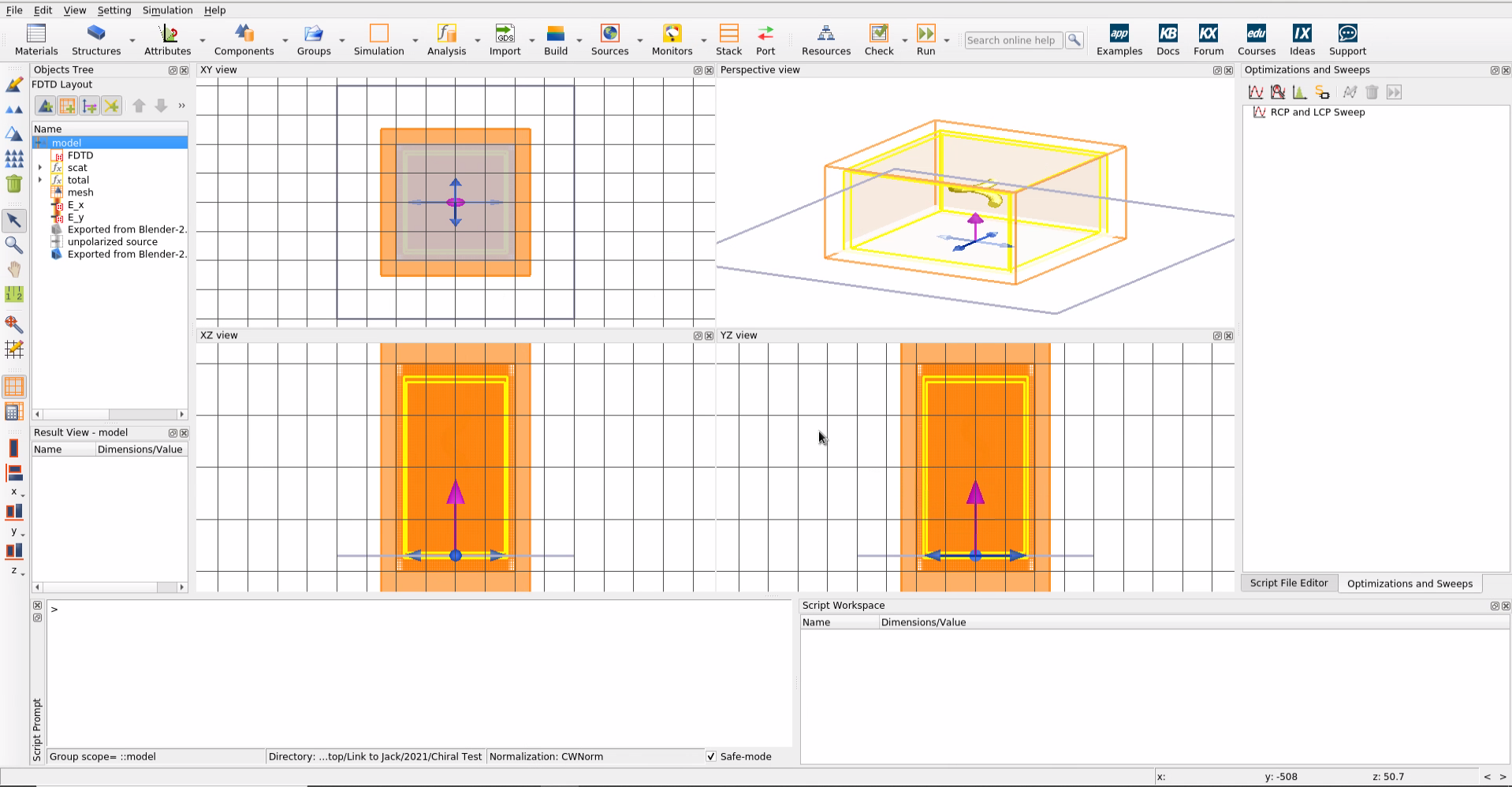TAGGED: circular-polarization, fdtd, Lumerical-FDTD, optics, simulation
-
-
December 8, 2021 at 2:45 pm
jgoogasi
SubscriberHello,
I have been trying to simulate the circular dichroism spectrum of various chiral materials. My setup is basically an ordinary simulation box with orthogonal plane-polarized wave sources out of phase by (+/-) 90 degrees to create RCP/LCP light. I saw other forum topics about this and I believe this is the convention. The issue I keep running into is non-convergence to the auto-shutoff level (currently 10^-6). Any other non-polarized sources reach the auto-shutoff quickly (< 2 hrs). I have attached an image of the workspace to give a better idea, but please let me know if there is any other information I should include. The spring model in the simulation box is not my end-goal but was created to hopefully speed up troubleshooting as it should exhibit CD properties.
Thank you for your help.
December 9, 2021 at 12:04 amGuilin Sun
Ansys EmployeeThis is a typical slow converging issue. From the screenshots, it seems you used finer mesh along the propagation direction, throughout the propagation. This makes the PML thin, and it can reflect back and forth. To remedy, it is generally suggested that just uses the background mesh accuracy (2 by default, do not use much higher mesh accuracy) plus override mesh to resolve geometries if necessary. Please test the case without the override mesh. In addition, please use Steep Angle PML, and increase the number of layers.
Circular polarized light is different from a linearly polarized light in terms of light-matter interaction. Otherwise you would not use it.
In case the issue cannot be resolved successfully, you can simulate two different polarization and then combine the results by post processing:
Ansys Insight: Custom TFSF source
You may also check if it has higher diffraction orders with very large diffraction angle, say over 70 deg or above. If so please use Steep Angle PML with more number of layers.
August 2, 2023 at 12:17 pmuzmayaqoob1960
SubscriberDear @jgoogasi
Could u plz let me know how are u mimicing chiral material in FDTD(means what are the material properties that needs to be feed in Lumerical ).If U could guide it would be really great favor.
August 2, 2023 at 10:40 pmGuilin Sun
Ansys EmployeeI believe the structure is chiral . But the material is uniform as FDTD right now does not simulate chiral materials.
Viewing 3 reply threads- The topic ‘How to properly simulate/converge chiral FDTD simulation?’ is closed to new replies.
Ansys Innovation SpaceTrending discussionsTop Contributors-
3597
-
1283
-
1107
-
1068
-
978
Top Rated Tags© 2025 Copyright ANSYS, Inc. All rights reserved.
Ansys does not support the usage of unauthorized Ansys software. Please visit www.ansys.com to obtain an official distribution.
-












